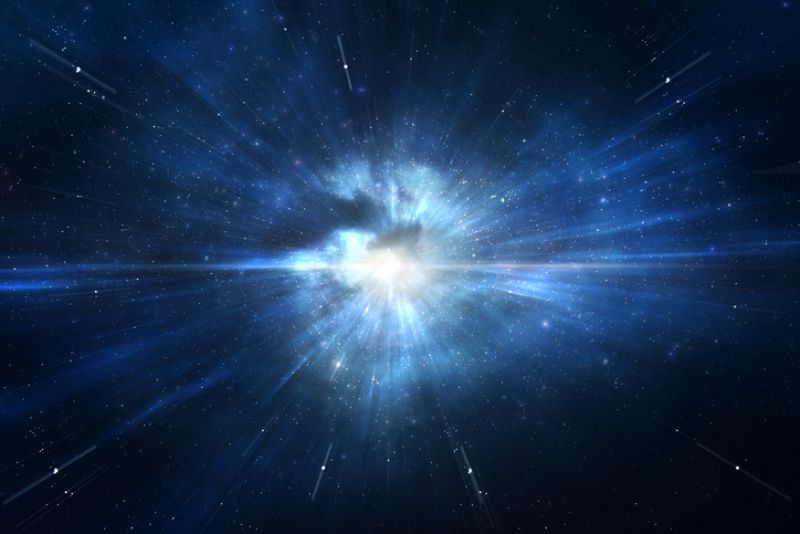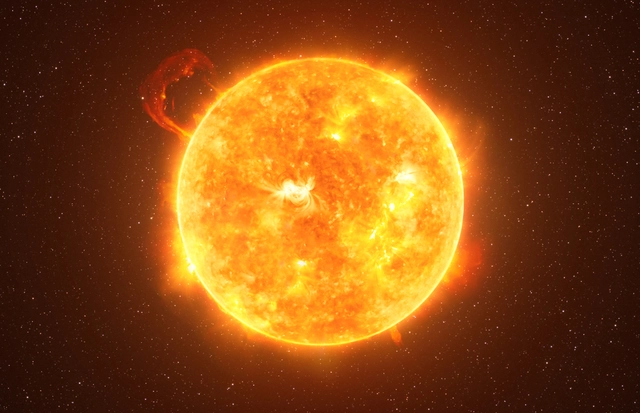Diving into the vastness of the cosmos has always been a fascinating topic for humanity. From the ancient astronomer who looked at the stars with curiosity, to the modern physicist who seeks explanations in quantum theory, the universe never ceases to amaze. 🌌🔭 But what if there were more? What if there were not one, but countless parallel universes to our own?
This mystery, known as the multiverse theory, has fascinated scientists and amateurs alike, challenging our understanding of reality itself. On this cosmic journey, we will explore this theory in depth, revealing its intricate mysteries and potential implications for our understanding of the cosmos. 🔬💫
Throughout this text, we will examine the various interpretations of multiverses proposed by theoretical physicists. From the theory of parallel universes, to the idea of a constantly branching cosmos, each interpretation raises unique questions about the universe and our place in it. 🌠🌀
We'll also discuss possible evidence for the existence of multiverses, and how scientists are working to search for signs of other universes. While these ideas may seem like something out of science fiction, they are based on fundamental scientific principles and could radically change our understanding of the universe. 🚀🌐
Finally, we will ponder the fascinating implications of the multiverse theory. Could there be alternative versions of ourselves in other universes? How would the existence of multiverses affect our understanding of life, destiny, and reality itself? Dive into this intriguing interdimensional journey and uncover the mysteries of the multiverses. 🪐💡
What are multiverses?
The multiverse theory is a concept that has been discussed and debated by physicists and astronomers for decades. Essentially, the idea is that there are multiple parallel universes to our own. These “multiverses” could be radically different from our own, with completely different laws of physics, or they could be very similar but with minor variations in history.
Cosmic inflation theory
One of the main foundations for the existence of multiverses comes from the theory of cosmic inflation. According to this theory, the universe as we know it is just a small bubble within a vast inflationary field. During the Big Bang, this field expanded at an incredible speed, creating infinite “bubbles” or universes.

Multiverses and quantum mechanics
Quantum mechanics, the theory that describes how subatomic particles work, also provides some interesting insights into multiverses. The many-worlds interpretation of quantum mechanics suggests that every time a quantum decision is made, the universe splits into parallel universes.
The role of the observer
In quantum mechanics, the act of observation can change the state of a particle. This leads to the idea that there may be parallel universes in which different observations were made. In this context, each observer could be considered a separate universe, and all these universes could exist in parallel.
How could we detect other universes?
Detecting the existence of other universes is a significant challenge. By definition, these universes would be outside our observable horizon. However, there are some theoretical possibilities for their detection.

Quantum Gravitation
Quantum gravity, a theory that attempts to combine general relativity with quantum mechanics, suggests that we might be able to detect the existence of other universes through the subtleties of particle physics.
Implications of multiverses
If multiverses exist, this has some fascinating implications. For example, if there are an infinite number of universes, then it is likely that there exist universes in which every possible combination of events occurred.
The anthropic principle
The anthropic principle suggests that the universe we observe is the way it is because if it were different, we wouldn't be here to observe it. In a multiverse, this principle would make even more sense, as there would be an infinite number of universes with different conditions, and we would only be present in those that are compatible with life.
String theory and multiverses
String theory, a theory that proposes that subatomic particles are actually one-dimensional “strings” vibrating in multiple dimensions, also suggests the possibility of multiverses. According to this theory, we could live in a three-dimensional “brane universe” within a higher-dimensional “brane multiverse.”
The additional dimensions
According to string theory, there are additional dimensions beyond the three spatial and one temporal dimensions that we know of. These additional dimensions could provide the “space” for other parallel universes.
In conclusion, the existence of multiverses is still a debated theory and requires further experimental evidence to be validated. However, it is an idea that fascinates and challenges our understanding of the universe and our own existence. The search for evidence and the development of new theories about multiverses will continue to be an exciting area of research in physics and astronomy for many years to come.
Conclusion
In conclusion, the multiverse theory represents one of the most fascinating and challenging ideas in contemporary physics and astronomy. With its foundations in cosmic inflation, quantum mechanics and string theory, it proposes the possibility of parallel universes, each with its own physical laws, histories and realities.
This revolutionary concept challenges us to reconsider our place in existence and to accept the idea that our universe could be just one of an infinite number of possible universes. Such thinking opens up a vast range of possibilities, from universes where the laws of physics are radically different, to those in which every possible combination of events has occurred.
Furthermore, multiverses could provide a broader context for the anthropic principle, suggesting that we are present to observe our universe simply because it is one of the few in which conditions are suitable for life.
However, despite the fascination it generates, the multiverse theory remains a subject of debate and needs more experimental evidence for validation. Detecting other universes is a significant challenge, but theories such as quantum gravity suggest that we might be able to detect their existence through the subtleties of particle physics.
Despite the challenges, finding evidence and developing new theories about multiverses will continue to be an exciting area of research in the years to come. As such, continuing to explore the mysteries of the multiverse promises to continue to push the boundaries of our understanding of the universe and our own existence.



